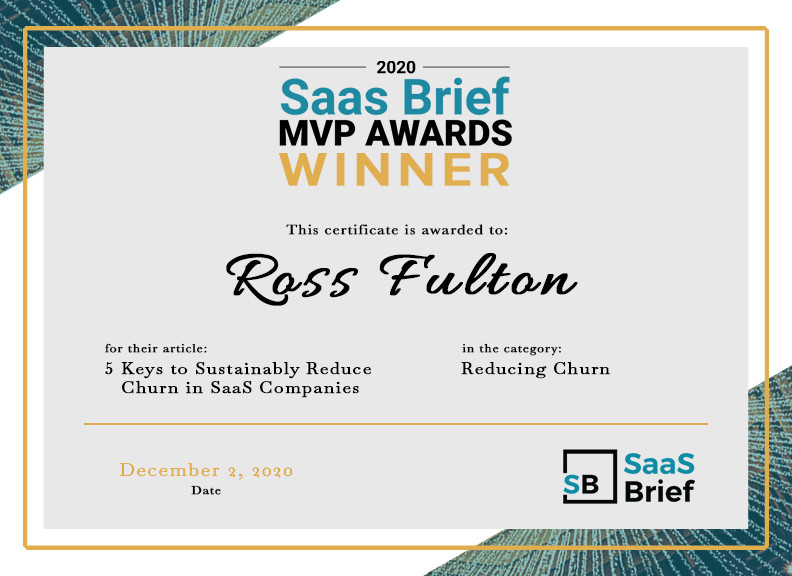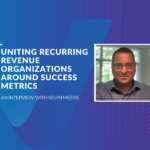Retaining customers is tough right now
There is no concrete evidence to suggest that the economic downturn will subside anytime soon. This is why you should stay away from unsustainable hail-mary tactics to reduce SaaS churn in your organization. Deferred payment terms on subscription renewals, additional discounts, free professional services—these offers might work now, but can you afford to keep applying them next quarter or next year?
Instead, you must focus on how to sustainably reduce SaaS churn in your organization. As a customer and/or revenue leader in a B2B software company in 2020, the question of how to sustainably reduce churn should be keeping you up at night. Here are some ideas to help you get back to sleep:
1. Make customer adoption a top strategic priority to reduce churn
Establishing and maintaining a customer’s adoption of your product is THE core prerequisite to retaining and expanding that customer. That being agreed, we need to define what ‘adoption’ is and isn’t so we can measure progress towards achieving it, then maintaining it among your customers.
2. Recognize that usage does not = adoption
Adoption is NOT simply a customer using your software product. The customer who has activated their account, set up their team’s profiles, migrated their data, consumed the training and is appearing as ‘active’ in your environment does not automatically equate to an adopted customer.
You achieve and maintain adoption when your customer realizes recurring measurable value by using your product. This distinction between use vs. use that creates measurable value for the customer is critical and too often overlooked. Achieving the latter, true version of adoption will enable you to reduce churn.
You need to define outcomes that connect 4 elements to create the link between product use and value realization. Those elements include the job being done by the user, the features/functions of your product, the intended value of those features/functions and the customer’s goals. At the intersection of these 4 elements are what we at Valuize call value-based outcomes. These outcomes serve as adoption milestones.
3. Approach adoption as a science, not an art
You will require well engineered processes that effectively and efficiently achieve and maintain adoption, as defined above, to sustainably reduce churn consistently and efficiently across your customer cohorts. This approach is the opposite of custom or even reactive approaches that are prone to high costs, overruns and failures.
By defining prescriptive value-based outcomes for your ideal customer profiles, you can then map out repeatable and measurable activities that deliver those outcomes. These activities must cover:
- Features/functions of your product that need to be used by different user roles
- Onboarding/enablement/service tasks your teams need to complete
- Equivalent tasks the customer needs to complete on their side
Measuring progress toward and completion of these activities will help you define leading metrics that will enable you to better predict and triage churn risk.
4. Ensure your acquisition and retention strategies are unified
Sales teams squeezing a square customer into a round product do not create a customer who you can successfully retain. Instead, you end up creating a customer expecting outcomes that your business can’t efficiently or effectively deliver. These customers will churn.
Your customer retention strategy must start the moment a customer enters your sales funnel as a new prospect in order to sustainably reduce churn. Your sales qualification, discovery, governance and presentation/demo processes should be fully aligned with the outcomes and adoption activities defined in points #2 and #3 above. By doing this, you are creating alignment with how you will ensure adoption and achieve retention.
For example, applying governance to your sales processes that ensures customers are purchasing the correct products with the correct number of users will reduce the risk of revenue churn at time of renewal. The “correct” products enable the customer to perform the activities required to achieve the outcomes you’ve prescribed.
If the customer can’t measure value against a product, don’t sell it.
5. Create a churn risk management framework
Revenue churn is one of the top operational risks facing any subscription revenue company, and it should be managed accordingly. To sustainably reduce churn, establish a churn risk management framework (CRMF) by borrowing best practices from the discipline of operational risk management. A CRMF includes processes for identifying mitigating, monitoring and reporting churn risks, as well as associated assessment and measurement standards.
A CRMF defines the churn risks applicable to your customer cohorts. Each risk is assessed by impact and likelihood. You could also use velocity as part of the assessment. You can get started by designing and documenting controls in the CRMF to mitigate each churn risk. These controls exist (or should exist) in your adoption formulas and overall customer success strategy.
Test the controls on a regular basis. Remediate any issues you identify to increase the strength of these processes helping prevent churn. Integrate executive visibility and action into the CRMF to instill a company-wide culture of customer ownership. Use the CRMF to define responsibilities and accountabilities in your churn risk mitigation strategies.
Celebrate when you retain a customer. Analyze, learn and take action when you lose a customer. Contact the Valuize team for guidance on how to build and scale your customer success strategy.






